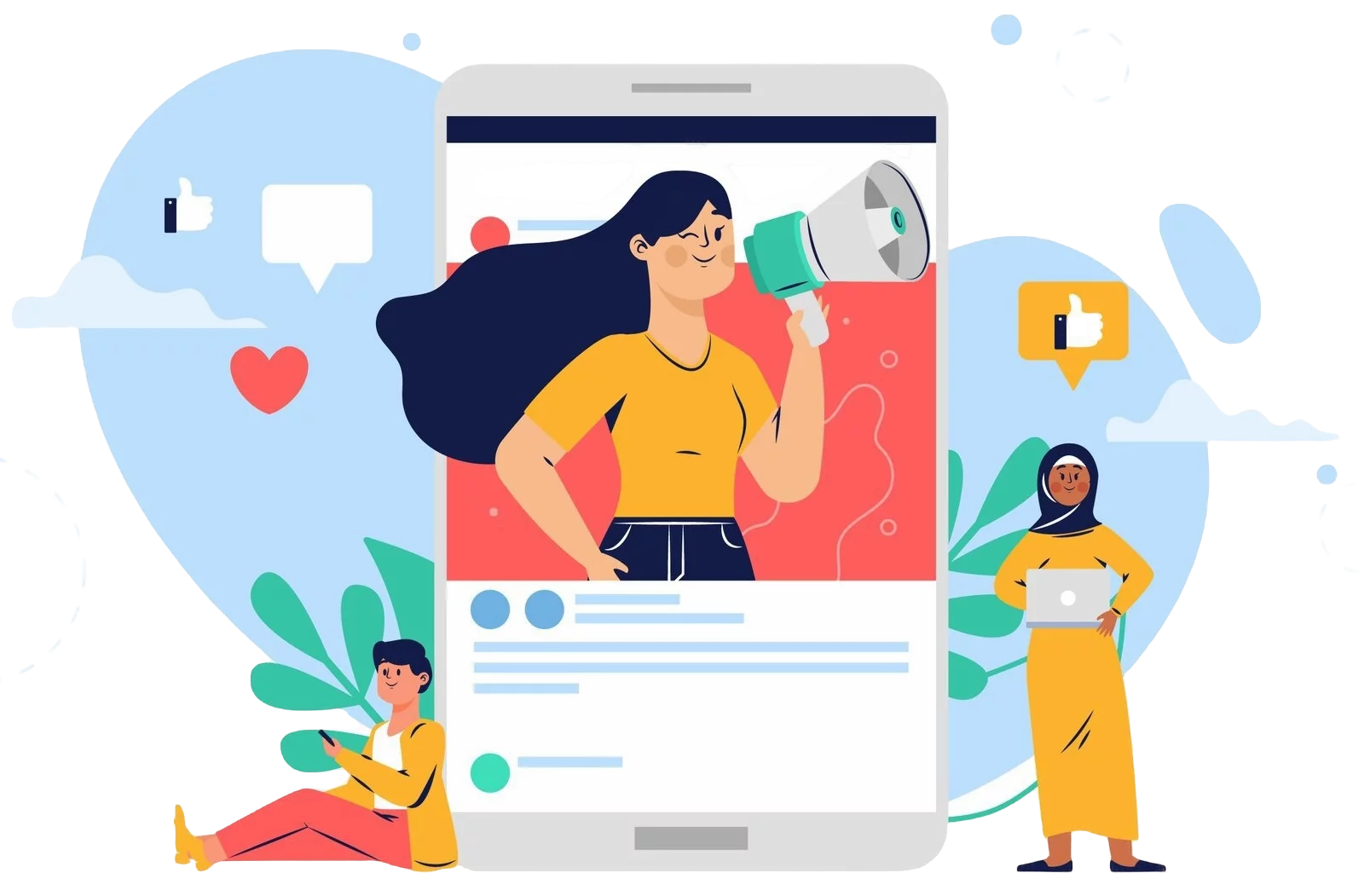In today’s digital-first world, brands continuously look for effective ways to convert influence to sales. Whether you’re a startup trying to make your mark or a well-established business aiming to boost your bottom line, understanding how influence drives conversions is crucial. With influencer marketing at the forefront, this article dives deep into practical, proven strategies that help businesses transition smoothly from building influence to achieving better sales.
Understanding the Shift from Influence to Sales
The journey from influence to sales isn’t as simple as partnering with popular influencers or creating eye-catching content. It’s about fostering meaningful connections with audiences, engaging authentically, and aligning influencer campaigns with clear business goals. For instance, brands today increasingly favor micro and nano influencers for their higher engagement rates and relatable content. This approach underscores the need for a genuine connection between influencers and their followers, as authenticity is a major driver of trust, and trust leads to conversions.
In order to render this process effective brands must leverage data, optimize their strategies and concentrate on cultivating sustainable relationships with influencers and audiences alike. However, let’s delve into these strategies in greater detail: they are crucial because they enable brands to thrive in an ever-evolving market. Although some might argue that the focus should solely be on data analysis, this is not the case.
1. Set Clear Goals and KPIs for Conversion Success
Every successful campaign begins with clarity. Before jumping into influencer partnerships, outline what success looks like. Is your objective to enhance website traffic visits, generate leads, or stimulate direct sales? However, understanding the nuances of each goal is crucial. Each aim carries its own implications; for instance, boosting visits may increase visibility, but leads require a deeper more engaging approach. Although these goals can seem interconnected, they diverge in strategy because the methods employed differ significantly. This complexity invites careful consideration of your priorities.
For example:
- Define metrics: Trackable actions like clicks, downloads, or purchases are vital.
- Use proper tools: Platforms like Google Analytics and influencer marketing tools help measure ROI effectively.
Transitioning from influence to sales requires well-defined KPIs so every stakeholder knows what they’re working toward.
2. Focus on Targeted Influencers for Niche Engagement
Instead of chasing influencers with millions of followers, focus on those aligned with your niche. Micro and nano influencers tend to cultivate a more loyal and engaged following, which often results in greater conversions. For instance: a vegan snack brand collaborating with plant-based lifestyle influencers is more likely to experience sales conversions; however, this is less certain when compared to a general food influencer. Although the reach may be smaller, the connection can be deeper and more impactful because genuine engagement often yields better results.

Amplify Your Brand,
One Influence at a Time.
To find the right influencers:
- Leverage platforms like Hobo.Video, which match brands with suitable influencers.
- Look for engagement rates over follower count.
- Prioritize influencers whose audience demographics match your target market.
3. Blend Content Authenticity with Value
Influencers who provide authentic content and value-driven promotions are more likely to impact buying decisions. A review, unboxing, or tutorial-style video highlighting the benefits of your product resonates better than generic ads. Always ensure influencers have creative freedom, as their unique storytelling fosters audience trust.
User-generated content (UGC) campaigns frequently yield superior results, however, this is largely due to their perceived authenticity. Encouraging influencers to share their genuine experiences with your products can, in fact, transform influence into measurable sales outcomes. Although the initial engagement may vary, the impact often resonates deeply with the audience.
4. Optimize for Platforms That Drive Sales
Different platforms work better for specific goals. If your focus is conversions:
- Instagram works well for visually appealing product demonstrations.
- TikTok offers short, engaging videos with viral potential.
- YouTube is perfect for in-depth reviews or tutorials.
- Facebook and LinkedIn target professional and niche audiences effectively.
For e-commerce brands, integrating shopping features such as Instagram Shops or linking to product pages in stories can create a seamless buying journey. Choose platforms based on your audience’s preferences and behavior; however, it is essential to consider the specific context of each platform. Although some audiences may prefer one platform over another, this choice often depends on various factors, including active engagement and user experience. Because of these nuances, understanding your audience is crucial.
5. Leverage Data to Enhance Campaign Performance
Tracking and analyzing data is a cornerstone of converting influence to sales. Without understanding performance, it’s impossible to optimize campaigns. Use analytics to:
- Monitor which influencer campaigns drive the most traffic or sales.
- Identify gaps where engagement is high but conversions lag.
- Adjust strategies in real-time to improve ROI.
Platforms such as Hobo.Video which is quite popular assist brands in monitoring influencer metrics and optimizing campaigns to achieve improved outcomes. However, this process can be complex; it requires careful analysis. Although many brands utilize these tools, not all achieve the desired results immediately. Because of this, ongoing adjustments may be necessary to enhance overall effectiveness.
6. Create a Seamless Buyer Journey
Even with great influencer campaigns, if your website or checkout process is clunky, conversions will suffer. Ensure that your landing pages are optimized for mobile devices: they must be visually appealing and easy to navigate. Quick loading times are crucial; moreover, clear calls-to-action (CTAs) and secure payment options are essential. However, achieving this can be challenging because it requires attention to detail. Although it may seem straightforward, these elements work together to enhance user experience.
For example, a skincare brand promoting a product through an influencer can include:
- A direct link to the product page.
- Exclusive discount codes for the influencer’s followers.
- Testimonials or UGC on the landing page for added trust.
7. Provide Exclusive Offers and Discounts
Nothing motivates action quite like exclusivity. Offer special discounts, free trials, or limited-time offers through influencers to drive urgency. Promoting a “15% off only for followers of (Influencer Name)” establishes a sense of exclusivity and trust; this encourages followers to make purchases swiftly. However, it is essential to consider the implications: such strategies may alienate those who are not followers. Although the discount seems appealing, it might lead to a perception of unfairness among potential customers. People often respond positively to incentives, but it is important to ensure that the approach does not backfire. Because of this, marketers should tread carefully when implementing similar promotions.
8. Build Long-Term Influencer Relationships
While one-off campaigns can yield results, long-term partnerships often perform better. Consistent partnerships between brands and influencers serve to bolster trust; this, in turn, increases the likelihood of follower conversion. Although long-term campaigns can require significant effort, they enable influencers to weave the brand seamlessly into their content. This integration feels more authentic and relatable to the audience, however, it is essential to maintain the integrity of the influencer’s voice.
9. Tap Into Emotional Storytelling
Storytelling remains one of the most powerful tools in marketing. Influencers who tell compelling narratives about how a product resolved their issues or enhanced their lives can inspire their followers to try the product themselves. People buy emotionally first; however, they engage in rational thinking second. This means that you should focus on establishing emotional connections through storytelling, because that is often more effective. Although logic plays a role, it is the story that truly captivates the audience.
10. Harness the Power of Reviews and Testimonials
Influencers can also collect and amplify testimonials from real users. User-generated content (UGC)—which prominently showcases reviews—is an effective method for establishing social proof. People tend to trust the opinions of their peers, particularly when these views are endorsed by influencers they respect; however, the impact of such endorsements can be even more profound. Although opinions vary, the collective sentiment is often persuasive because it resonates with shared experiences. This dynamic not only enhances credibility but also fosters a sense of community among consumers.
Conclusion
In summary, the journey from influence to sales involves a mix of clear strategy, authentic content, and data-driven adjustments. By establishing specific objectives, collaborating with suitable influencers and prioritizing audience trust, brands can attain elevated conversion rates while cultivating enduring relationships with both influencers and their audiences. However, one must always remember that this journey is about forging authentic connections, providing value and consistently enhancing their efforts. Although challenges may arise, this commitment to growth is essential because it forms the foundation of successful engagement.
Why Choose Hobo.Video for Influence to Sales?
When it comes to achieving conversions from influence, Hobo.Video is the ideal partner. As an AI-driven influencer marketing platform, Hobo.Video connects brands with a vast network of influencers and UGC creators, ensuring every campaign aligns with business goals. With tailored strategies, data-backed insights, and end-to-end campaign management, we help brands of all sizes convert influence into measurable sales.
Whether you’re a small business or an established enterprise, Hobo.Video simplifies influencer marketing, offering the tools and expertise to grow your brand. Our proven success, combined with our vast influencer network and personalized approach, ensures your campaigns yield the best results. Let us help you turn influence into sales with ease!
So, if you are an influencer, Register Here!

